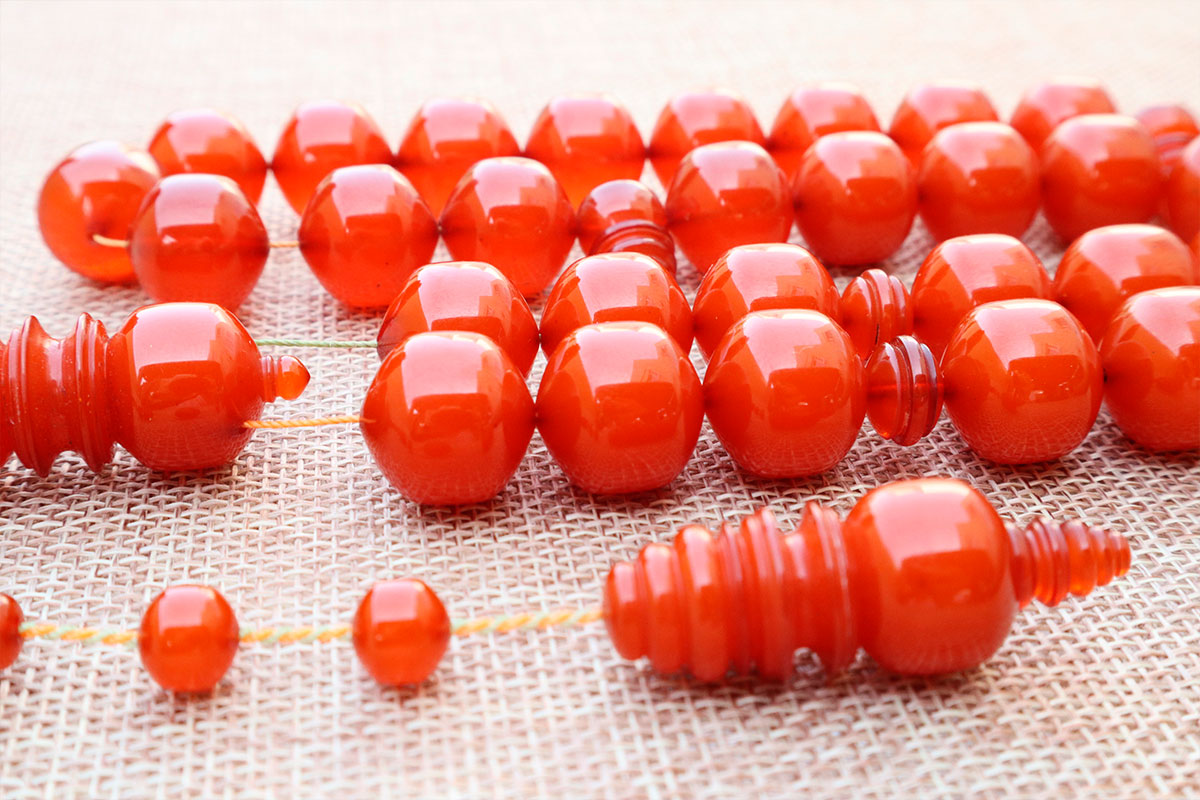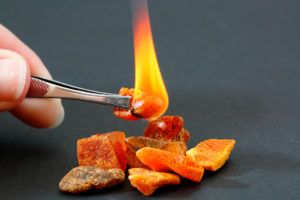Faturan, in Middle Eastern beadwork, is a material used to make beads, notably in the making of komboloi and misbaha.
History
The creation of “Faturan” is thought to have originated by a chemist. He was melting down the filings left after carving beads from amber and mixed these remnants with other natural resins, such as mastika, frankincense, colophony, and turpentine, to mold individual beads from natural substances. Unfortunately, his original formula has long since been lost.
“Bakelite” and “Parkesine” are both synthetic resins named after their inventors. And so “Faturan”, named after its original inventor, became a brand of cast thermosetting phenol formaldehyde resin, similar to Bakelite and Catalin, manufactured by Traun & Son of Hamburg., developed in the early 20th century, and produced until the 1940s.
Faturan Types
The most widely known types of Faturan is called damar. The swirls show the combination of more than one type of Faturan being mixed and combined, for example, transparent mixed with a dark color. Most Ottoman Faturan prayer beads were made from Faturan rods that have a swirl effect. This is called “eye damar”.
Gold Faturan
The properties found inside Faturan determine its desirability and value, the most valuable being gold, in the forms of gold leaf, dust or metal, added when molten. Gold Faturan was used for making jewelry beads, rings, and accessories. Tribal beads were used as dowry gifts and for making necklaces and other jewelry in North Africa and Asia.
Golden Lava Flow Faturan
One of the rarest and sought after Faturan types is called Golden Lava Flow Faturan. It is a very rare mixture that involves a complicated and costly method of preparing a combination of melted gold and infusing it with Faturan. As the gold is in a molten form when combined with Faturan, it gives the material a molten lava look.
Source: Wikipedia
.




